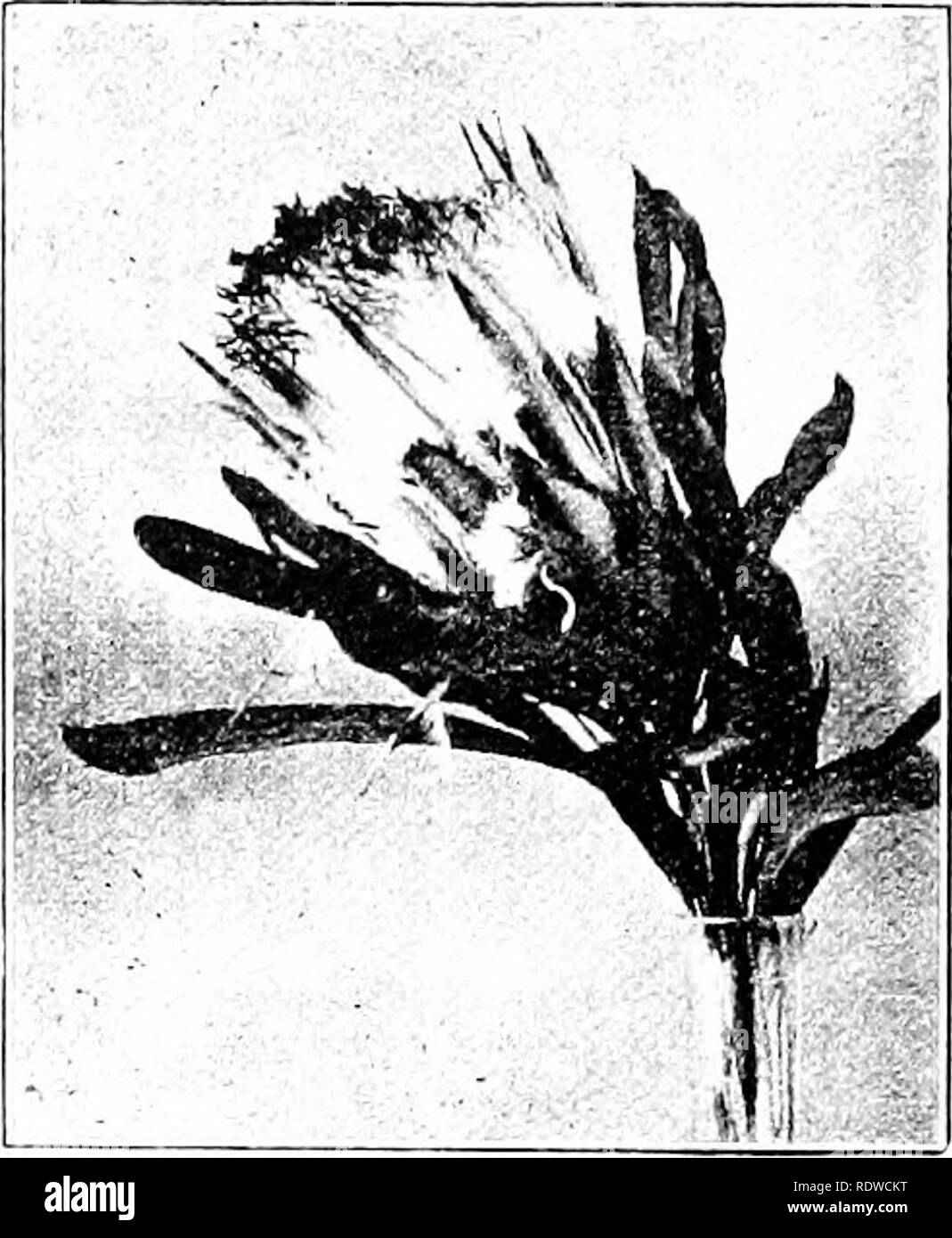. Plants and their ways in South Africa. Botany; Botany. 290 Plants and their Ways in South Africa. F'IG. 261.—Protea macrophylla, R. Br. Leucospermum lacks the involucre that makes Protea conspicuous, but each flower is subtended by a well-developed bract. The claws of the peri- anth usually remain united or they may separate at the tips. The styles are deciduous and the fruit smooth. Trees or shrubs sometimes trailing. Flowers usually yellow (rarely red). About thirty species, mostly at the coast but ex- tending to Rhodesia. Mimetes has the habit of Leucospermum, but the flowers are reddish

Image details
Contributor:
The Book Worm / Alamy Stock PhotoImage ID:
RDWCKTFile size:
7.2 MB (318.7 KB Compressed download)Releases:
Model - no | Property - noDo I need a release?Dimensions:
1434 x 1743 px | 24.3 x 29.5 cm | 9.6 x 11.6 inches | 150dpiMore information:
This image is a public domain image, which means either that copyright has expired in the image or the copyright holder has waived their copyright. Alamy charges you a fee for access to the high resolution copy of the image.
This image could have imperfections as it’s either historical or reportage.
. Plants and their ways in South Africa. Botany; Botany. 290 Plants and their Ways in South Africa. F'IG. 261.—Protea macrophylla, R. Br. Leucospermum lacks the involucre that makes Protea conspicuous, but each flower is subtended by a well-developed bract. The claws of the peri- anth usually remain united or they may separate at the tips. The styles are deciduous and the fruit smooth. Trees or shrubs sometimes trailing. Flowers usually yellow (rarely red). About thirty species, mostly at the coast but ex- tending to Rhodesia. Mimetes has the habit of Leucospermum, but the flowers are reddish or purple, and the small axillary heads are arranged in a racemose inflorescence, each head being hooded by a bright bract subtending a head above. Serruria may be known by the needle-shaped, usually divided leaves, and purplish silvery heads, frequently in clusters. Shrubs erect or trailing. Fifty species, chiefly Western. Nivenia has 4-flowered heads in terminal spikes; in- volucres of four bracts, becoming hardened in fruit. Twiggy shrubs known usually by the two kinds of leaves, the lower pinnate, the upper simple, spathulate, flabellate, linear, or lanceolate. Some species have only slightly dimorphic leaves. About thirteen species. Dr. Marloth in "The Flora of South Africa" retains the name Faranomiis, .Salisb. (1807), instead of Nivenia, the name given to the genus by Robert Brown (1810). Faurea.—The calyx bursts below like that of the Silver Tree, but finall)' falls off'. Nut bearded ; style finally falling. Native of Natal and Rhodesia. The flowers are in terminal solitary spikes or racemes. Shrubs or trees with vertical leaves. Brabeium (Kafir Chestnut or Wild Almond).—Staminate, . Please note that these images are extracted from scanned page images that may have been digitally enhanced for readability - coloration and appearance of these illustrations may not perfectly resemble the original work.. Stoneman, Bertha. London, New York, Longmans, Green